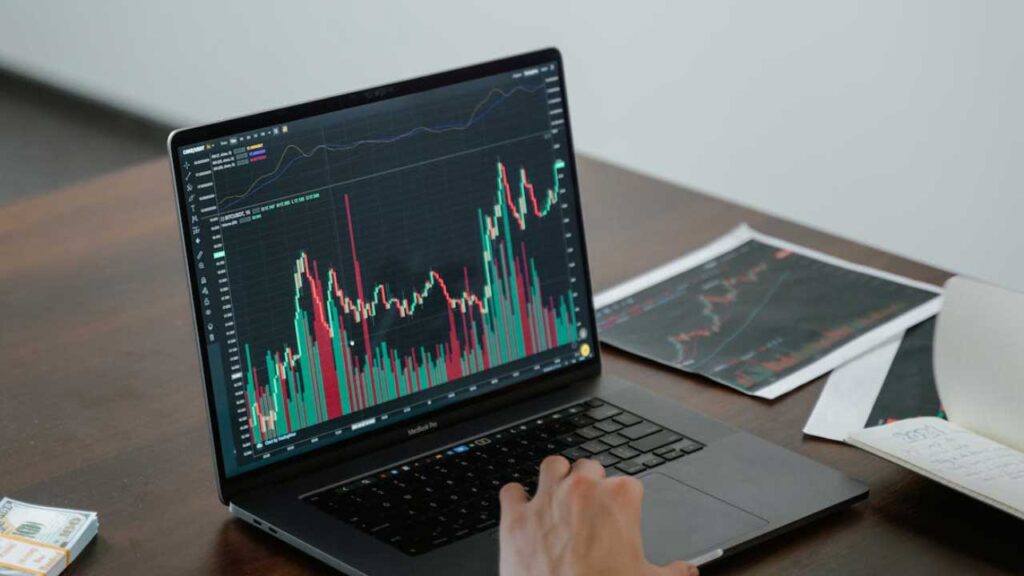Forex trading indicators are essential tools used by traders to analyze currency markets and make informed trading decisions. These indicators help identify trends, potential entry and exit points, and market conditions by processing historical price data and providing insights into future price movements. Here’s a detailed overview of some of the most popular forex trading indicators:
1. Moving Averages (MA)
Description: Moving Averages are used to smooth out price data and identify trends over a specific period. They are calculated by averaging the closing prices over a set number of periods.
Types:
- Simple Moving Average (SMA): Calculates the average of closing prices over a specified number of periods. For example, a 50-period SMA adds the closing prices of the last 50 days and divides by 50.
- Exponential Moving Average (EMA): Gives more weight to recent prices, making it more responsive to new information. The EMA reacts faster to price changes compared to the SMA.
Uses: Moving Averages help traders identify trends, determine support and resistance levels, and generate buy or sell signals when prices cross the moving averages.
2. Relative Strength Index (RSI)
Description: The RSI is a momentum oscillator that measures the speed and change of price movements. It ranges from 0 to 100 and is typically used to identify overbought or oversold conditions.
Calculation: RSI = 100 – (100 / (1 + RS)), where RS is the average of the gains and losses over a specified period.
Uses: An RSI above 70 indicates that an asset may be overbought, while an RSI below 30 suggests it may be oversold. Traders use these levels to identify potential reversal points.
3. Moving Average Convergence Divergence (MACD)
Description: The MACD is a trend-following momentum indicator that shows the relationship between two moving averages of a security’s price. It consists of the MACD line, the signal line, and the histogram.
Components:
- MACD Line: Difference between the 12-day EMA and the 26-day EMA.
- Signal Line: 9-day EMA of the MACD Line.
- Histogram: Difference between the MACD Line and the Signal Line.
Uses: MACD helps traders identify potential buy or sell signals when the MACD line crosses above or below the signal line. The histogram shows the strength of the trend and potential reversal points.
4. Bollinger Bands
Description: Bollinger Bands consist of a middle band (SMA) and two outer bands that are standard deviations away from the middle band. The distance between the bands varies with market volatility.
Components:
Middle Band: 20-day SMA.
Upper Band: Middle Band + (2 x standard deviation).
Lower Band: Middle Band – (2 x standard deviation).
Uses: Bollinger Bands help traders assess volatility and identify potential overbought or oversold conditions. Prices touching the upper band may indicate overbought conditions, while touching the lower band may suggest oversold conditions.
5. Stochastic Oscillator
Description: The Stochastic Oscillator is a momentum indicator that compares a security’s closing price to its price range over a specific period. It ranges from 0 to 100.
Components:
- %K Line: Measures the current closing price relative to the price range over a set period.
- %D Line: 3-day SMA of the %K Line.
Uses: Readings above 80 indicate that an asset may be overbought, while readings below 20 suggest it may be oversold. The %K and %D line crossovers can signal potential buy or sell opportunities.
6. Fibonacci Retracement
Description: Fibonacci Retracement levels are horizontal lines that indicate where support and resistance are likely to occur based on Fibonacci numbers. These levels are derived from the Fibonacci sequence.
Key Levels:
- 23.6%
- 38.2%
- 50.0%
- 61.8%
- 76.4%
Uses: Traders use Fibonacci Retracement levels to identify potential reversal points and to assess the strength of trends. The levels are drawn by plotting a trend line between a high and low point and marking key Fibonacci levels along the line.
7. Average True Range (ATR)
Description: The ATR measures market volatility by calculating the average range between the high and low prices over a specified period.
Calculation: ATR = (Previous ATR x (n – 1) + True Range) / n, where True Range is the maximum of (high – low), (high – previous close), and (low – previous close).
Uses: ATR helps traders assess market volatility and adjust their position sizes accordingly. Higher ATR values indicate greater volatility, while lower values suggest a more stable market.
8. Ichimoku Cloud
Description: The Ichimoku Cloud is a comprehensive indicator that provides information about support and resistance levels, trend direction, and market momentum. It consists of five lines: Tenkan-sen, Kijun-sen, Senkou Span A, Senkou Span B, and Chikou Span.
Components:
- Tenkan-sen (Conversion Line): 9-period average.
- Kijun-sen (Base Line): 26-period average.
- Senkou Span A: (Tenkan-sen + Kijun-sen) / 2, plotted 26 periods ahead.
- Senkou Span B: 52-period average, plotted 26 periods ahead.
- Chikou Span: Current closing price plotted 26 periods back.
Uses: The Ichimoku Cloud provides a visual representation of support and resistance levels, trend direction, and potential buy or sell signals based on the interaction of the lines with the price.
9. Parabolic SAR (Stop and Reverse)
Description: The Parabolic SAR is a trend-following indicator that provides potential entry and exit points by plotting dots above or below the price chart.
Calculation: The SAR is calculated based on the previous period’s SAR, the extreme price (EP), and an acceleration factor (AF).
Uses: When the SAR is below the price, it indicates an uptrend, and when it is above the price, it suggests a downtrend. Traders use the SAR to identify potential trend reversals and to set trailing stop-loss levels.
10. Volume
Description: Volume measures the number of shares or contracts traded in a security or market during a given period. It is a key indicator of market activity and liquidity.
Uses: Volume analysis helps traders confirm trends and signals from other indicators. For instance, increasing volume during an uptrend confirms the strength of the trend, while decreasing volume may indicate a weakening trend.
Conclusion
Forex trading indicators are invaluable tools for traders looking to make informed decisions based on market analysis. Each indicator provides unique insights into market trends, volatility, and potential entry and exit points. By combining multiple indicators and understanding their strengths and limitations, traders can develop more robust trading strategies and enhance their decision-making process. Whether you’re a novice or an experienced trader, mastering these indicators can improve your ability to navigate the complexities of the forex market and achieve your trading goals.


